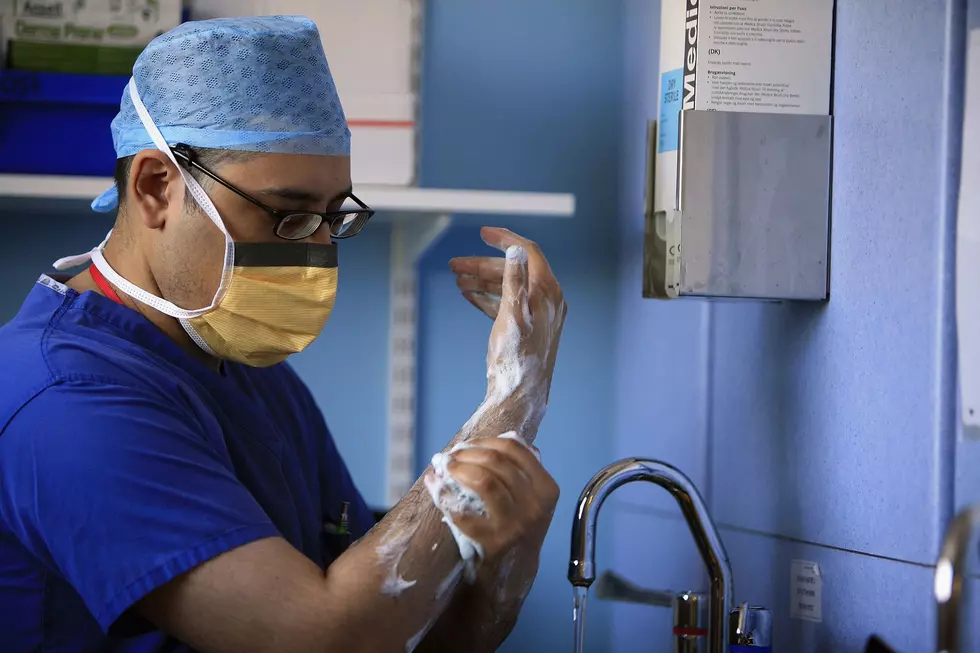
Brace Yourselves: Contagious Stomach Bug Slamming Northeast
It's shaping up to be a brutal season for the norovirus. Here's what you need to know.
Feeling Queasy?
The stomach bug is nothing new, but some seasons are a lot worse than others. This year is shaping up to be brutal.
Norovirus became such an issue at a public school in Highland Park, New Jersey, the building was forced to close down this month so it could undergo a deep cleaning.
According to the Centers for Disease Control and Prevention (CDC), contagious stomach bugs are hitting the Northeast especially hard. The CDC said the positivity rate for norovirus is more than 15-percent in the region, which is the highest positivity rate in the entire country.
GI bugs tend to reach peak transmission around mid-March, which is painting a concerning picture for what the following weeks will look like.
Keeping Yourself Safe from Norovirus
The norovirus is extremely contagious and it causes unpleasant symptoms like cramps, vomiting, nausea, and diarrhea. It is also known to cause headaches, fever, and body aches.
Doctors say hand sanitizer will not protect you against norovirus. The CDC says alcohol-based products, like Purell, will not remove the virus off your hands should you touch a contaminated surface. Only soap and water can.
Doctors say regularly washing your hands is the best way to protect individuals from contracting norovirus.
Doctors say in addition to regular handwashing, people should avoid touching their face -especially the eyes and mouth - during this time. In addition, it's highly advised to wash store-bought products like fruits and vegetables before consuming them.
Health officials are also urging those who aren't feeling up to snuff to isolate themselves from others to prevent an accidental transmission.
How Norovirus Spreads
The norovirus and other GI bugs are extremely transmissible. The most common methods of spreading include getting onto shared utensils and food.
The New York Department of Health explains:
The virus is passed in stool and vomit. Outbreaks have been linked to sick food handlers, contaminated shellfish or water contaminated with sewage. It is generally spread from person to person by direct contact, but some medical reports suggest that the virus can spread through the air during vomiting.
A healthy person can become ill if they receive items like utensils and food that have first been handled by an infected person. Chipotle was forced to pay a $25 million penalty due to their role in the 2015 and 2018 norovirus outbreaks. Employees claim they had to come into work despite being sick and unfortunately spread what they had to customers.
Read More: Potentially Deadly Virus Detected in New York's Neighboring States
The virus also spreads when someone touches a contaminated surface, like a desk or door, and then puts their unwashed fingers in their mouth. The CDC says just one single particle of the norovirus is enough to take someone down.
The incubation of the virus typically ranges from one to two days.
Treating Norovirus
In the unfortunate incident you find yourself clutching the porcelain god, doctors strongly encourage you to keep yourself hydrated. An individual can become dehydrated in instances of severe diarrhea and vomiting since the body is actively losing fluid.
The norovirus is not bacteria, so taking antibiotics will not alleviate symptoms.
Drinking things like Pedialyte, Gatorade, or fluids that have electrolytes will help restore the body. Additionally, drinking ginger ale can help calm an upset stomach.
If a person is unable to keep fluids down and finds him-or-herself becoming extremely lethargic, doctors strongly recommend going to the hospital.
The CDC encourages those sick with norovirus to say home and remain isolated for two days after symptoms stop, because a person can still be contagious.
The best advice is to stock up on hydrating liquids, saltines, chicken noodle soup, rice, and other items that are gentle on the stomach. That way, in the unfortunate instance they become infected with a GI bug, it ensures a person has items they can eat or drink.
Based on CDC data, norovirus season on the East Coast typically peaks around mid-March and the first week of April. The virus infects between 19 and 21 million Americans each year.

Norovirus Symptoms New Yorkers Need To Beware Of
Gallery Credit: Chris Cardenas
7 Healthy Things You Need During A New York Winter
Gallery Credit: Dave Fields
See Why These 25 Rappers Are in Jail or Prison Right Now
The 10 Worst Places To Live In New York State
Gallery Credit: Megan
More From WIBX 950









